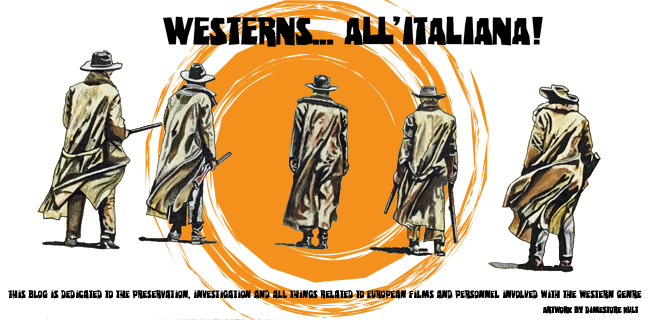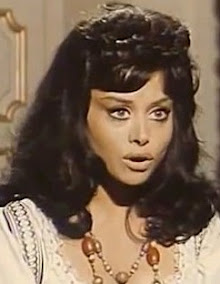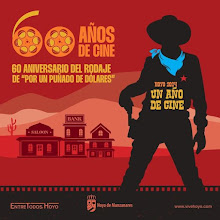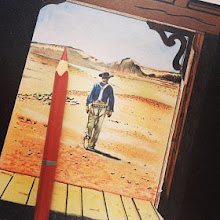True Accounts of a Classic: Behind the Scenes of Sergio
Leone’s The Good, The Bad, and the Ugly by Peter J. Hanley.
A Book Review by Tony Williams.
This handsome, beautifully illustrated, well-researched
book of over 400 pages (from Il Buono Publishing) is another example of the
valuable work done by individual talents outside the institutional confines of
an oppressively market-driven publishing industry. Currently available on
various Amazon.com links, whether America, the UK or Germany (the latter
containing appreciative reviews), this book is essential reading for anyone
seriously interested in Leone’s work.
Fortunately, the days are long gone when the Italian
Western experienced critical disdain and ignorant condescension by
establishment critics when it first appeared. We now have studies by
Christopher Frayling, Robert C. Cumbow, John Fawell, and many others who fully
understand what the genre was attempting in its heyday. But what has been
lacking so far is a detailed production history of the filming and interviews
with many of the production team. Since this book appears fifty years since the
actual film itself, naturally many key personnel, such as Leone himself, Lee
Van Cleef, and others, are no longer with us. Clint, himself, remains not just
a man of few words but no words at all in this study, and I’m sure the author
made several attempts to contact him. However, since the actor has moved on to
other prestigious activities in the past few decades he may have felt that he
has said everything he needed to say in the past. However, he remains a strong
visual (as seen in production and behind the scenes stills) presence as well as
a firm memory in the minds of those who remember him. Yet what is so important
in this study is not the centrality of one particular actor or director but the
role of a collaborative production team that made this film possible not only
in its now unassailable stature of being one of the best Italian Westerns of
its type, but also as a work diligently researched in advance and the product
of a strong production team in which everybody collaborated in making the film
what it is today.
The book is well illustrated not only with production
stills but behind-the-scenes photos showing Clint playing golf between takes,
the actor seated in publicity stills with his fellow title characters, and
rediscovered collaborators such as Romano Puppo who functioned not just as set interpreter,
but also body double and stuntman (see e.g. Figures 2.3, 2.9, 2.47 dressed as
Angel Eyes in the Sad Hill cemetery location, 5.41, 11.53.). We see also Leone
engaged in many demanding production activities on set alongside technical
collaborators such as cinematographer Tonino Delli Colli and assistants Franco
Di Giacomo and Sergio Salvati, as well as many showing the frequent appearance
of the late Serena Canevari as script girl. The eleven profusely illustrated
chapters in this book cover the little known historical background concerning
the ill-fated General Sibley’s Texan and New Mexican campaign that formed one
of the rare instances of the Civil War in the West, Principal and Supporting
Actors, Art Direction, Assistant Direction, Editing, Titles, and Sound, Deleted
Scenes, Music, Special Effects, Leone, and an outline of the original script
and shooting locations. Throughout the work, Hanley shows the geographical
locations as they are today comparing them to scenes in the film. He makes expert
use of the advantages of Blu-ray both in frame enlargements, and close-ups of
maps barely seen in theatrical prints but based on actual historical ones. Many
photos show period watercolor paintings such as “Leaving Andersonville” from
the military prison series by J.E. Taylor (1839-1901) as well as actual Civil
War photographs by Matthew Brady and others that show the very careful
historical reconstructions that went into the film. Great care was taken to
reconstruct close approximations of the actual Civil War cannons (even if they
were made in Spain) and historically accurate armaments such as Angel Eyes
wielding an 1851 Colt Navy revolver (Figure 9.4) except where creative license
occurred (see e.g. Figure 1.10, where an 1873 cannon is used) and this appears
to be at a minimum. Andersonville mentioned by Angel Eyes in the union prison
camp sequence actually opened some two years after Sibley’s campaign (363-364)
but in the world of cinema not beholden to neither realist fallacies nor rigid
historical accuracy this type of divergence is excusable in the creative sense.
The whole book is a tribute to a dedicated working team who all collaborated in
making the best possible film that they could, before or behind the camera.
Neither Leone nor Lee Van Cleef were around for the book
but, as with other deceased collaborators, Hanley compensates for such sad
absences with either interviews from surviving family members, such as Carla
Leone or Van Cleef’s son Alan, as well as extracts from secondary material such
as an interview conducted several years ago with the actor. Cuban-Mexican
actress Chelo Alonso (fondly remembered for her stunning appearance in the 1959
Steve Reeves Goliath and the Barbarians) who plays the soon-to-be-bereaved
widow of the farmer grilled by Angel Eyes in the second sequence contributes an
informative interview. Stills from other Leone films also appear including
several from For a Few Dollars More that show “No Name” in bed with Mara
Krupp’s voluptuous, well-proportioned wife (Figures 7.8-9) of the hotel manager
(Kurt Zips who resembles a younger version of Benny Hill) appearing briefly in
the final film. The removal of the revealing Krupp scene may not have been just
due to concerns over running time but undermining of the nickname given to “Il
Monko” showing him breaking his “holy” vow for the pursuit of happiness but the
quest for dollars. Had this scene remained, Clint’s character would have
resembled a James Bond of the West who would certainly not be one of Andy
Warhol’s Lonesome Cowboys (1968) though parallels to Joe D’Allesandro’s Joe the
Hustler would have been hard to avoid. This “brief encounter” set a precedent
for another deleted scene in the following film showing Clint in bed with
Silvana Bacci (Figures 7.6-7), who is also interviewed in the book. Figures
7.12 and 7.14 certainly show him as a “happy camper” in two off-camera moments!
Like many others interviewed, Bacci (238-9) describes the actor as polite but
distant (possibly already considering the next move in his career) while
collaborating on the film in a professional manner and having no history of
alcoholism, unlike Lee Van Cleef as mentioned by two other surviving crew
members. Clint is also seen supporting Leone’s home team with an Italian flag
during an Italy vs. Spain football match on set, as well as consuming wine from
a traditional Spanish leather wineskin (Figures 4.18, 4.19). “When in Rome,
Keep your Director Happy….”
The book mentions several deleted scenes that were either
filmed such as the one showing Tuco teaming up with the Mexican brothers to
avenge himself on Blondie or the one supposedly opening the film showing Bill
Carson burying the money in the cemetery that becomes the climatic location for
the final gunfight. The dates on the crosses seen on the markers link up with
the bloody toll Sibley’s campaign took on his men. At various points in the
book, production members recount the humorous incident of how a Spanish
official accidentally prematurely blew up the bridge seen in the final Civil
War sequence by linguistically mistaking the command he was supposed to
receive. This lead to a delay necessitating constructing the bridge again.
Two errors occur in the text that can easily be
corrected. In the extensive Eli Wallach interview surely “Charles Lawton”
should read “Charles Laughton” (70) and Tony Ranford as “Tony Randall” (70)
especially since the actor attended the same Neighborhood Playhouse where
Wallach began his formal training. These are minor in comparison to the
immensity of this book that is worth saving up for and acquiring.
To paraphrase the advertising logo following the release
of the first two entries in the Dollar Trilogy, “This is the first book of its
kind. Hopefully, it will not be the last.” It is well-illustrated, meticulously
researched, and indebted to new types of technology that enable us not only to
zoom in to the page on Newsweek that Clint reads off-set in one of his off-duty
moments but also revealing that it is the European English language edition and
not the American one. The story he reads deals with captured American flyers in
Hanoi during the Viet Nam war (Figure 5.42), during an historical era that not
only influenced the Italian Western but the Hollywood version that would never
be the same again.
Tony Williams
is Professor/Area Head of Film Studies in the Department of English at Southern
Illinois University at Carbondale and a Contributing Editor at Film
International.













It seems this book is not available anywhere anymore.
ReplyDeleteThere's one on e-bay from England bid starts at 90 pounds.
ReplyDelete